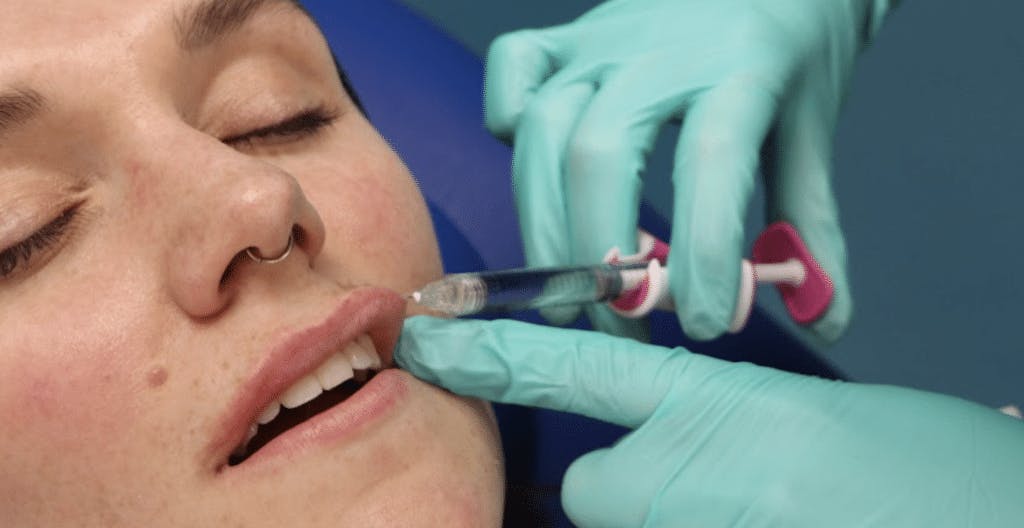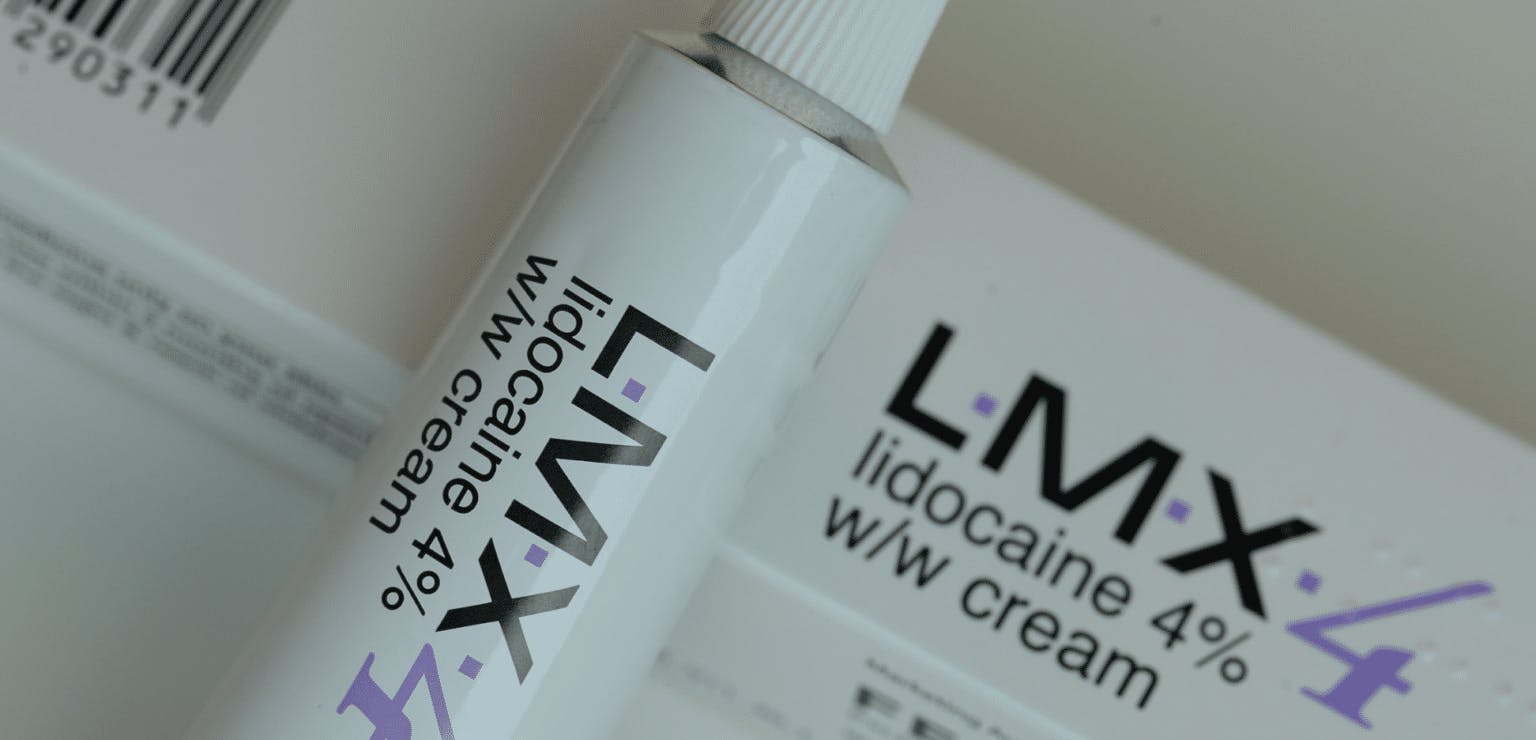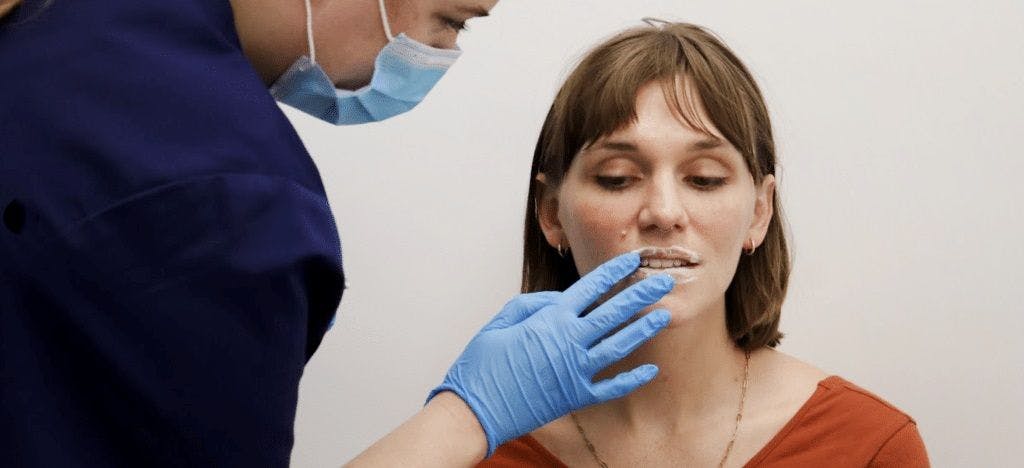Should I Use A Block For Lip Filler?

We have noticed a rise in the number of aesthetics students asking if they should use a block for lip filler. This is more accurately known as an infiltration and is commonly practiced by dentists.
While the short answer is that we do not routinely recommend using a block for lip filler, we wanted to explore the subject in a broader sense to provide a fully informed response.
Here, Dr Kalpna Pindolia, aesthetic medicine expert and director of education at Harley Academy, explains this popular numbing topic…

Types of anaesthesia used for lip filler
There are three main anaesthetic options that may be used for lip filler patients.
Lidocaine included within the filler:
Lidocaine is included in the formula of most popular hyaluronic acid-based filler brands.
This makes any filler procedure increasingly comfortable as it’s administered. There are brands with no anaesthetic agent as well, for patients with an allergy.
Topical lidocaine:
Lidocaine is the most common anaesthetic agent used for lip fillers. This is because of its relatively fast onset time (approximately 3-5 minutes) and its duration (approximately 1-2 hours) which is appropriate for most filler procedures.
Other treatment areas rarely need anaesthesia.
A topical 4% lidocaine product can be applied to the treatment area for 20 minutes before the procedure. This eases soreness at the injection point(s) and offers a number of advantages..
• Easy to administer.
• Works quickly.
• Lasts long enough for the treatment time.
• Effective.
• Minimal side effects or complications.

Do be aware that this can cause slight blanching of the skin, so photography pre-application and post application may be useful to assess the skin, if vascular occlusion is a concern post filler treatment.
A block:
An infiltration or block is a local anaesthetic, sometimes referred to as a dental block or nerve block. It involves needles being used to administer lidocaine to specific nerve regions that may or may not be injected for the treatment. With filler treatments, pure lidocaine may be preferred, rather than a common combination with epinephrine, as this will blanch the skin through vasoconstriction – this may be confused with vascular occlusion.
Lip filler procedures are not especially painful, so, in our opinion, we do not need the radical anaesthesia of an infiltration in these instances. However, whilst it’s not a method we recommend, it is an option.
• A block may not fully numb the desired area.
• It may be associated with complications such as nerve damage or haematoma.
• The number of overall injections and entry points into skin will be increased, resulting in post-procedural pain and bruising.
• Effects from block anaesthesia can linger for up to 3 hours so there is a risk of unperceived trauma from external factors, for example, not realising a drink is too hot due to lip numbness.
• Prolonged numbing effects can cause difficulties with basic tasks such as eating, drinking and speaking, as well as drooling.
• For new students and non-dentists the reliability of an infiltration can be technique dependent.
• There may be swelling in the area being treated due to local anaesthetic product and trauma.
• Muscle action may be affected. For example, with lips, ptosis of the lip muscles affects symmetry of the end result and the patient may need re-treating later.
Deciding which anaesthetic is appropriate

Anaesthetic use is multifactorial, with a number of considerations regardless of the agent.
Patient factors – their pain perception, previous experiences.
Practitioner factors – your ability to reassure your patient during a procedure as well as your technical ability.
Alternatives are available that do not require the use of a prescribed medicine – cold packs, distraction devices, etc.
In conclusion…
At Harley Academy we believe lidocaine – within the filler plus an additional topical numbing cream such as LMX, placed for at least 20 minutes pre procedure – is sufficient for a comfortable lip filler treatment.
Blocks could be perceived as overkill, especially considering the downsides, but it is a decision that is up to the individual practitioner.
All information correct at time of publication
Download our full prospectus
Browse all our injectables, dermal fillers and cosmetic dermatology courses in one document
By submitting this form, you agree to receive marketing about our products, events, promotions and exclusive content. Consent is not a condition of purchase, and no purchase is necessary. Message frequency varies. View our Privacy Policy and Terms & Conditions
Attend our FREE open evening
If you're not sure which course is right for you, let us help
Join us online or in-person at our free open evening to learn more
Our Partners














STAY INFORMED
Sign up to receive industry news, careers advice, special offers and information on Harley Academy courses and services

